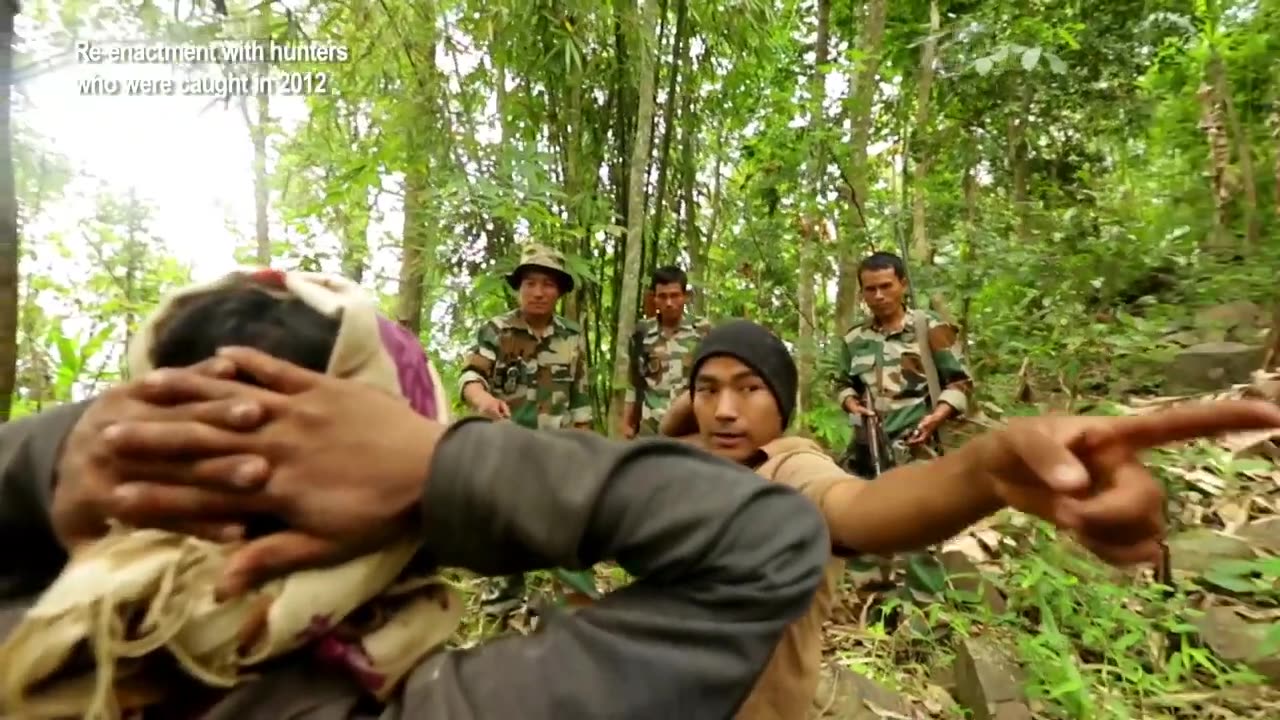Premium Only Content

Nagaland Wildlife Conservation by the Local Villagers-English Information
Nagaland is one of the states in India that is located to some of the most famous wildlife sanctuaries and national parks in the country. Some of them are Ghosu bird sanctuary, Rangapahar reserve forest, Ntangki national park, Fakim wildlife sanctuary and many more. Amongst all the wildlife reserves of Nagaland, the most prominent one is Ntangki National Park or Intanki Wildlife Sanctuary. Spread over 202.02 sq km, Ntangki National Park is home to species like Hoolock Gibbon, Palm Civets, Sloth Bear, Wild Dogs, Golden Langur, Tiger, Python, Flying Squirrel, and Monitor Lizard.Due to the continuous and intense engagement with the communities, the three villages of Sukhai, Kivikhu and Ghukhuyi in Zunheboto district of Nagaland formally declared around a total of 939 hectares of biodiversity rich forest as community-conserved areas in respective villages, which are now being jointly managed by them (see Figure 1 and Table 1). However, apart from these CCAs, they have also banned hunting and destructive fishing across the entire landscape of their villages, covering 3,751 hectares of forests and rivers. In general, each CCA on average is about 25% of the total landscape area owned by the village, which is quite large. The CCAs were delineated and mapped and the boundaries were well-defined through demarcation, digitization and participatory mapping. This resulted in improved management of common resources. Also, a blanket ban on hunting wild animals and birds, a ban on fishing by use of explosives, chemicals and generators, strict prohibition of cutting offire-wood/felling of trees, as well as a ban on collection of canes and other non-timber forest products for domestic and/or commercial purposes in the CCAs, have ensured conservation of large contiguous forest areas along with the unique endemic biodiversity they support.
Community engagement through consultation, conservation education, and public sensitization approaches was used to increase awareness of threats and integrated approaches at the community and stakeholder level. This was achieved through participatory planning, knowledge sharing, and capacity building. Around 30 sensitization campaigns were organized within the three pilot villages and on other community platforms like the local Ahuna festival, thus reaching out to a total of around 1,200 individuals directly, along with a positive impact on more than 10,000 individuals indirectly living in the vicinity of the project site. This resulted in many more villages urging a replication of these methods to manage their SEPLs the latest being Chinoketa
-
 10:34
10:34
justintech
20 hours ago $16.85 earnedBest Gaming PC Under $1000! - In 2024
56.8K8 -
 9:34
9:34
Dr David Jockers
17 hours ago $14.20 earnedThe Shocking Truth About Butter
103K8 -
 9:05
9:05
Bearing
1 day agoJaguar's Woke New Ad is SHOCKINGLY Bad 😬
43.4K106 -
 7:55
7:55
Chris From The 740
16 hours ago $10.35 earnedWill The AK Project Function - Let's Head To The Range And Find Out
30K9 -
 2:39
2:39
BIG NEM
13 hours agoHygiene HORROR: The "Yurt Incident"
20.7K2 -
 3:19:21
3:19:21
Price of Reason
16 hours agoHollywood Celebrities FLEE the US After Trump Win! Wicked Movie Review! Gaming Journos MAD at Elon!
112K76 -
 3:55:45
3:55:45
Alex Zedra
11 hours agoLIVE! Last Map on The Escape: SCARY GAME.
93.1K3 -
 1:14:07
1:14:07
Glenn Greenwald
16 hours agoComedian Dave Smith On Trump's Picks, Israel, Ukraine, and More | SYSTEM UPDATE #370
189K273 -
 1:09:07
1:09:07
Donald Trump Jr.
19 hours agoBreaking News on Latest Cabinet Picks, Plus Behind the Scenes at SpaceX & Darren Beattie Joins | TRIGGERED Ep.193
230K781 -
 1:42:43
1:42:43
Roseanne Barr
14 hours ago $68.21 earnedGod Won, F*ck You | The Roseanne Barr Podcast #75
105K218